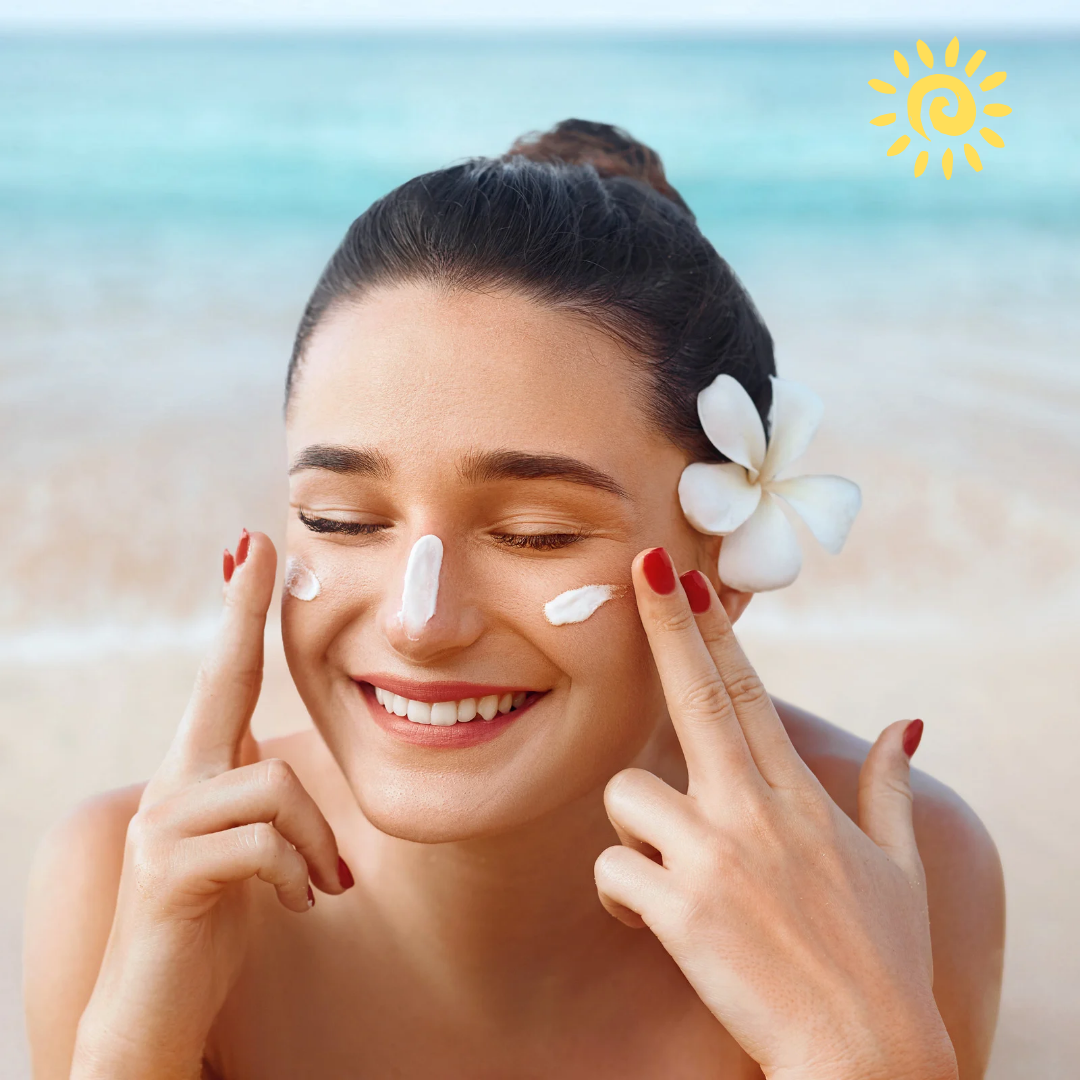Top 5 pharmacy sunscreen for year 2024
What is Sunscreen?
Sunscreen is a topical product that helps protect against sun damage by absorbing or reflecting UV rays.
How does Sunscreen works?
Sunscreen is a mixture of organic and inorganic chemical molecules that will absorb and filter the light that will reach your skin. The organic molecules in the sunscreen absorb ultraviolet sun rays and release them in the form of heat. By absorbing and filtering harmful light, sunscreen helps us prevent skin cancer, sunburn, pigmentation, tanning, and much more.
There are two types of sunscreen:
1. Chemical Sunscreens
These sunscreens absorb the harmful rays of the sun. Thus they act like a sponge. They contain ingredients like oxybenzone, avobenzone, octocrylene, homosalate, and octinoxate. The formulation of these sunscreens gets absorbed in the skin easily and does not leave a white “cast.”
2. Physical Sunscreens
These are also known as mineral sunscreen and they work like a shield. Instead of getting absorbed, they sit on the skin’s surface and deflect the harmful UV rays. Active ingredients like zinc oxide and titanium dioxide present in these sunscreens help the sensitive skin of the face feel less irritated.
The following are some guidelines for using sunscreen to shield your skin from UVA and UVB rays:
1. Choose Broad-Spectrum Sunscreen:Look for “broad-spectrum” on the label. This type of sunscreen protects against both UVA rays (which cause premature aging and wrinkles) and UVB rays (which cause sunburn).
2. Apply Sunscreen Properly:
Apply generously: Use enough sunscreen to cover all exposed skin, including your face, ears, neck, lips, arms, legs, and tops of your feet. Aim for about an ounce, which is roughly the size of a shot glass, for your entire body.
Reapply frequently: Reapply sunscreen every two hours, or more often if you’re sweating or swimming. Towel drying can remove sunscreen, so reapply after swimming or vigorous activity.
Don’t forget sensitive areas: Apply sunscreen to often-missed areas like the tops of your ears, the back of your neck, the tops of your feet, and around your eyes.
3.Combine Sunscreen with Other Sun Protection Methods:
For optimal protection, use sunscreen in conjunction with other sun-protective measures:
Seek shade: Especially during peak sun hours (10 am to 4 pm), try to stay in the shade whenever possible.
Wear protective clothing: Choose clothing that covers your arms and legs. Look for clothes with a tight weave and UPF (Ultraviolet Protection Factor) rating.
Wear a hat: A wide-brimmed hat helps shade your face, ears, and neck.
Wear sunglasses: Choose sunglasses that block UVA and UVB rays.
How to Choose the Best Sunscreen For Face?
1. Go For a Broad Spectrum Formulation
2. Consider SPF 30 and Above
3. Select the Right Type of Sunscreen Based on Your Skin Type
4. Avoid Fragrance and Harsh Ingredients
1. Solasafe
✅Non-Greasy
✅Nonirritating
✅Non comedogenic
✅Super Silky Matte Finish
✅Water Resistant
✅ Anti-aging
✅It will suit normal to oily skin type
2. Acne UV
✅Non-irritant
✅Paraben free
✅OIL FREE
✅NON-COMEDOGENIC
✅ WATER RESISTANT
✅No white cast
✅ Oily to acne prone skin type
3. UV Doux
✅Non comedogenic
✅ Broad spectrum protection
✅Oil free & non sticky
✅Sweat proof
✅Water resistant
✅ Enrich with Vit C and E
✅ Combination to oily skin type
4. The Derma-co
✅Broad spectrum protection
✅Non greasy and fragrance free
✅Also protecs from blue light
✅Non comedogenic
✅Water resistant
✅ Normal to dry skin type
https://amzn.to/3xW6cmi
5. Episof
✅Broad spectrum protection
✅Deep hydration
✅Acne safe
✅ Normal to dry skin type
✅Non comedogenic
✅Fragrance free
✅Paraben free
"Diet and Regime"
🌿Drink an adequate amount of water to stay hydrated.
🌿Seek shade and limit sun exposure during peak hours.
🌿Wear protective clothing, such as hats and sunglasses, in addition to sunscreen.
🌿Incorporate a healthy diet rich in antioxidants to support skin health.
🌿Apply this sunscreen gel generously and evenly before sun exposure.
🌿Store the sunscreen in a cool, dry place and avoid extreme temperatures.
🌿Check the expiration date before use and discard any expired products.
🌿Consult your dermatologist for personalised advice regarding sun protection.




Comments
Post a Comment